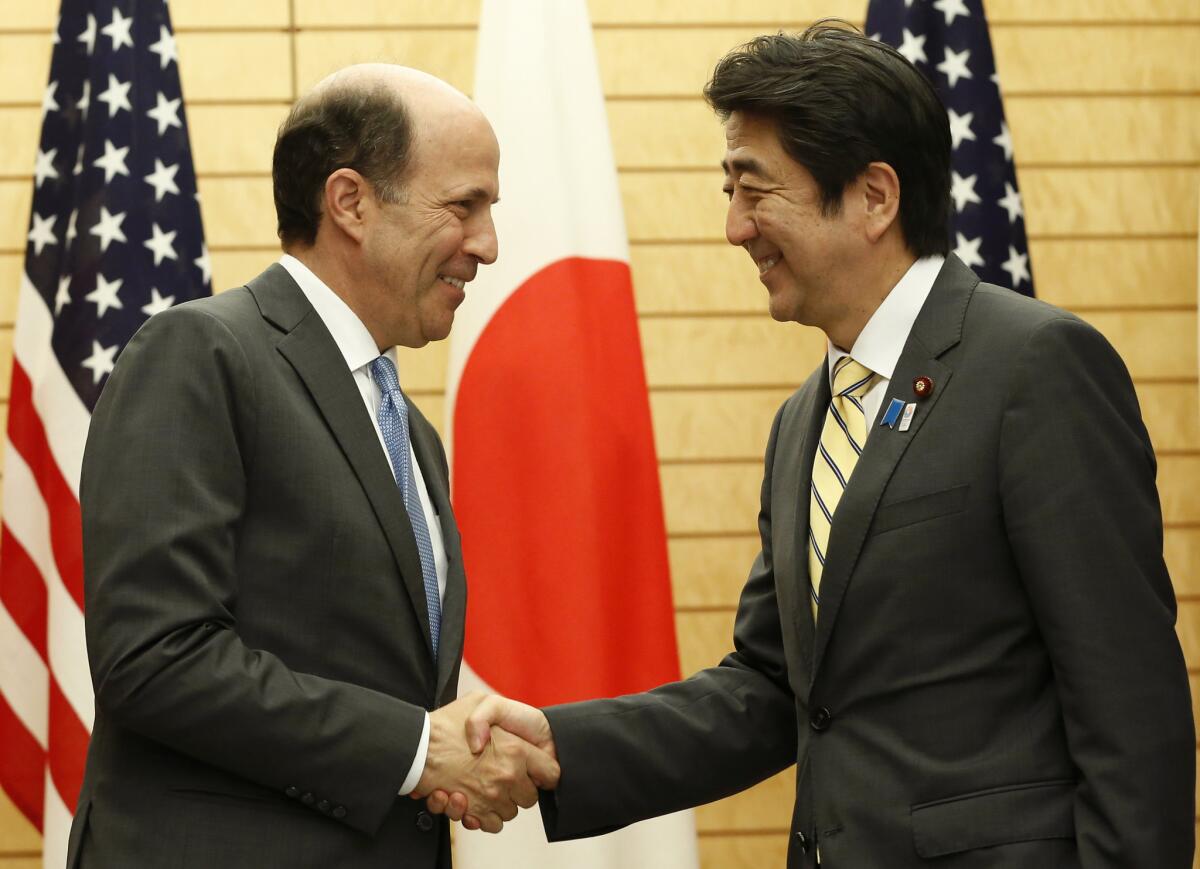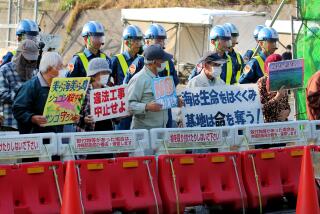U.S. and Japan unveil plan for returning Okinawa land

The U.S. and Japan unveiled plans Friday for gradually returning some land on Okinawa now used by the American military, but still intend to relocate a U.S. Marine base elsewhere on the island, an idea fervently opposed by Okinawans.
The island hosts the bulk of U.S. military facilities in Japan, fueling longtime protests among residents who lament worsened noise, pollution and crime. Two sailors were imprisoned last month for allegedly raping an Okinawa woman, the latest incident to aggravate tensions on the island. Rallies have also erupted against the use of Osprey aircraft deemed dangerous by locals.
The U.S. and Japan agreed last year to shift thousands of Marines away from Okinawa and want to relocate one especially controversial base to a less-crowded area of the island, but residents insist it should be moved from Okinawa entirely.
The newly released plan lays out how the U.S. will return land and military facilities to Japan. Under the plan, some facilities could be returned as soon as next March. However, the disputed Futenma base and other facilities will be relinquished no earlier than 2022 -- and that handoff still depends on getting another location to replace it on Okinawa.
Islanders have fervently opposed that idea in the past. As Japanese Prime Minister Shinzo Abe began stepping up efforts to move the base to another Okinawa location this year, the Ryukyu Shimpo newspaper declared, “The people of the prefecture have an indomitable will to reject this relocation,” according to a translation by the nonprofit Worldmeets.us.
Other facilities are slated to be returned as late as 2024, 2025 or 2028, and the schedule is peppered with the words “or later,” leaving room for added delays.
“Putting this on paper doesn’t mean it will happen,” especially when it comes to relocating Futenma, said Ayako Doi, an associate fellow at the Asia Society. Earlier plans were trumpeted only to be blocked by Okinawan officials, she pointed out.
“There’s been no major change in the opposition to keeping Futenma on the island.... This is another instance of kicking the can down the road,” Doi said.
After the plan was announced Friday, Okinawa International University economics professor Moritake Tomikawa told the Japan Times the lengthy and uncertain timeline and the need to build new facilities on Okinawa were problematic, rating the plan 60 out of a possible 100.
The U.S. and Japanese governments are eager to smooth out the issue as tensions simmer in the region. In the wake of its third nuclear test, North Korea is lobbing furious threats at the U.S. and South Korea. Japan and China have been trading barbs in a territorial dispute over rocky outcroppings in the East China Sea.
The Okinawa debate “drained a lot of our attention and our political focus,” Amy Searight of the office of the secretary of Defense told American Forces Press Service. “We’ll now be able to fully turn our attention to working together to address the big strategic issues facing the region.”
Doi said without any agreement from the Okinawans, however, the ballyhooed agreement is more of a political statement affirming U.S.-Japan ties than a sign of change.
ALSO:
Iran nuclear talks hit early snag
Bird flu deaths among Chinese reach 6
North Korea urges foreign embassies to evacuate, Russian official says
More to Read
Sign up for Essential California
The most important California stories and recommendations in your inbox every morning.
You may occasionally receive promotional content from the Los Angeles Times.










